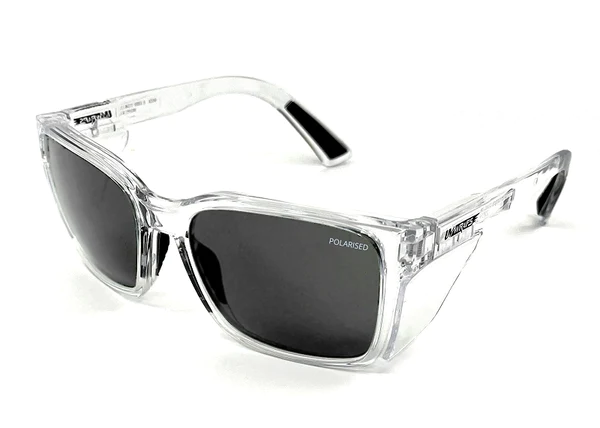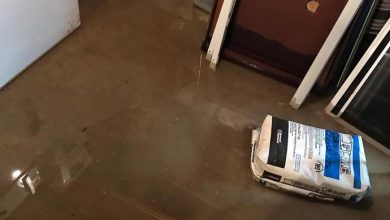Polarized safety glasses work their magic by harnessing the properties of polarized light waves. These glasses incorporate specialized polarization filters that selectively block certain orientations of light, effectively reducing glare and enhancing clarity.
How Polarization Enhances Vision
The true marvel of polarized safety glasses lies in their ability to eliminate glare. Whether it’s the blinding sun or harsh artificial lights, these glasses mitigate glare, ensuring increased visual comfort and safety.
Glare from Sunlight
- Impact on Outdoor Workers: For those toiling under the sun’s unforgiving rays, polarized safety glasses become indispensable, providing a shield against glare and preserving eye health.
- Sports and Recreational Activities: Athletes and outdoor enthusiasts benefit immensely from polarized lenses, as they enhance performance by reducing glare and enabling a sharper focus on the task at hand.
Glare from Artificial Light Sources
- Industrial Environments: In factories and industrial settings, where intense artificial lighting is commonplace, polarized safety glasses cut through the glare, ensuring precision and safety in operation.
- Laboratory Settings: Laboratories demand precision, and polarized glasses help scientists and technicians work with utmost accuracy by minimizing glare from lab equipment.
Traditional Safety Glasses
Features and Limitations: Traditional safety glasses offer baseline protection, but they often fall short when it comes to glare reduction.
Applications: They find applications in scenarios where glare is not a primary concern, such as indoor manufacturing facilities.
Advantages of Polarized Safety Glasses
Glare Mitigation: The standout feature of polarized safety glasses is their ability to reduce glare, making them ideal for outdoor and high-glare environments.
Enhanced Clarity: Polarization enhances visual clarity, allowing wearers to see with greater precision and comfort.
Improved Eye Comfort: Reduced glare translates to less eye strain, ensuring long-term eye comfort, especially during extended periods of use.
Consideration of Workplace Conditions
Outdoor vs. Indoor Work: Tailoring your choice to the specific work environment is crucial, as outdoor and indoor conditions pose different challenges.
Specific Hazards: Identifying the specific hazards your work entails can guide you towards the most suitable polarized safety glasses.
Frame and Lens Material
Durability and Impact Resistance: The durability of the frame and the impact resistance of the lenses are vital factors to consider for overall safety.
Weight and Comfort: Ensuring that your glasses are comfortable to wear for extended periods is essential for user satisfaction.
Industry Applications
- Reduced Sun Glare: Construction workers and landscapers benefit from reduced sun glare, allowing them to work efficiently and safely.
- Enhanced Visibility: Polarized safety glasses enhance visibility in manufacturing and warehousing environments, reducing errors and promoting safety.
- Decreased Eye Strain: Reduced glare leads to less eye strain, increasing overall worker comfort.
- Polarized Safety Glasses for Sports
- Eliminating Sun Glare: Athletes across various sports, from golf to cycling, rely on polarized safety glasses to eliminate sun glare, allowing them to perform at their best.
- Enhancing Athletic Performance: Sharper vision and reduced glare enable athletes to react faster and make precise movements, giving them a competitive edge.
Fishing and Boating
Reducing Water Glare: Fishermen and boaters often face intense water glare, which polarized glasses neutralize, ensuring safety on the water.
Safety on the Water: Polarized safety glasses enhance visibility, helping boaters navigate safely and fishermen spot their prey beneath the water’s surface.
Regulatory Standards and Certification
Requirements for Eye Protection: Explain the stringent requirements of the ANSI Z87.1 standard for eye protection, emphasizing the need for compliance.
Compliance with Polarized Safety Glasses: Describe how polarized safety glasses can meet or exceed these rigorous standards, ensuring their effectiveness.
CE Marking
European Standards: Outline the CE marking and its significance in demonstrating safety compliance in European markets.
Safety Compliance: Emphasize how the CE marking certifies that polarized safety glasses meet European safety standards.
Technological Advancements
Smart Features: Explore the integration of smart features like heads-up displays and augmented reality in future polarized safety glasses.
Integration with Augmented Reality: Discuss how these glasses may seamlessly integrate with augmented reality technology for enhanced safety and productivity.
Polarization vs. UV Protection
Clarify the distinction between polarization and UV protection, ensuring readers understand that polarized lenses primarily reduce glare, while UV protection safeguards against harmful UV rays.
Compatibility with Prescription Lenses
Customization Options
Discuss the availability of customization options, allowing individuals to tailor their polarized safety glasses to their specific needs and preferences.
Accessibility and Affordability
Emphasize that polarized safety glasses are increasingly accessible and affordable, making eye protection more attainable for a wider range of people.
Conclusion
In a world where safety and clarity are paramount, polarized safety glasses emerge as the solution that bridges the gap between the two. From their scientific underpinnings to their diverse applications across industries and recreation, these glasses provide a clear vision for safety. As technological advancements and sustainability drive the future of eyewear, polarized safety glasses remain a shining example of innovation in the service of protecting our most valuable asset: our eyes. As we navigate a world filled with potential hazards, let polarized safety glasses be your trusted companion, ensuring both safety and clarity in every endeavor.





